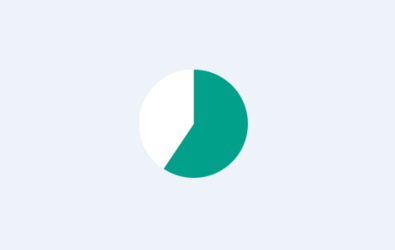Today, over half a million students received their GCSE results. This analysis examines the wider policy context, and this year’s patterns in subjects and grades.
Policy background
Today’s examination results are the latest stage in the roll-out of new GCSEs. Introduced under former education secretary, Michael Gove, the reformed GCSEs offer more challenging content, are examined at the end of the qualification, rather than through modular exams, and are categorised by a numerical 9-to-1 grading, as opposed to the earlier A*-G grading. In the first year of the new exams, the new GCSEs were limited to English and maths.
Over successive years, the reforms were extended so that they now include almost all other GCSE subjects. This year’s new qualifications include design and technology, media studies, and statistics, among others. Qualifications in ancient languages and the final few modern foreign languages will follow next year.
When new qualifications are introduced, the exams regulator, Ofqual, takes steps to make sure standards are comparable over time, and that pupils in a particular cohort are not at a disadvantage, especially those in the first year of a new qualification. Ofqual follows the principle of ‘comparable outcomes’ – drawing on statistical evidence such as the attainment of the cohort at the end of primary school, and receiving verification from senior examiners, to ensure that an A grade pupil in one year would receive an A grade the next year.
From this year, Ofqual has also been able to use the National Reference Test (NRT) to help in setting standards in English and mathematics. The NRT is a test – separate to GCSEs – in English and mathematics of year 11 pupils which takes place in a sample of schools in February/early March. Results from the NRT are then used to estimate the percentage of pupils who might be expected to get a 4 (a grade C under the old system) and a grade 7 (grade A) in their GCSEs, and hence whether there is a change in performance that should be reflected in the overall grades awarded. Despite a fall in results on the NRT Ofqual decided not to adjust the grade standards this year as they could not be confident that it was more than statistical noise.
Subject entry
It appears to be good news for England’s foreign language skills, as entries in modern foreign languages have increased by four per cent, against a long-term decline. Spanish has seen one of the largest increases in entries of any popular subject, by six per cent. It has a while to go before overtaking French as the most popular language, however. We will have to wait until later in the year to determine whether the increases are a genuine change in state-funded schools or a result of independent schools moving to the new GCSEs.
Girls are more likely to enter art and design, French, and Spanish, while boys are more likely to choose computing and design and technology. There were some promising signs of the gender gap closing, however, with a 14 per cent increase in girls entering computing and a six per cent increase in boys entering Spanish.
Statistics and Economics have seen the largest increases in entries (up 54% and 18%, respectively), though both are still relatively uncommon subjects among students at GCSE, with only 30,000 entries in 2019. Among the most popular subjects, double science entries are up by five per cent, with a more modest increase for maths, English, and English Literature.
The government’s push to get more pupils taking the English Baccalaureate (EBacc) could have precipitated the fall in entry in design and technology (down 23 per cent), as well as declines in entry for media studies and drama. By 2022, the government’s ambition is for 75 per cent of students to enter the complete set of EBacc subjects, rising to 90 per cent by 2025. DT GCSE entries have more than halved since 2014, while job shortages in the technology sector continue to grow.[1]
A shortage of qualified teachers may have contributed to the drop-off in entries in some subjects and challenges for future entry rates. For example, enrolment in DT initial teacher training is among the lowest of all subjects, with recruitment figures at only 25 per cent of government targets.[2] Without enough teachers with relevant qualifications, schools could struggle to provide these subjects.
Despite increased entries in the EBacc subjects, there are no direct incentives for schools to encourage more pupils to study the EBacc itself, though the Ebacc does influence the headline school performance measure, Progress 8. Art and design subjects, which are not included in the Ebacc, are up by 10 per cent this year, following a longer term decline
Attainment
Overall, there has been a slight improvement in performance. 20.6 per cent of entries were awarded a grade 7 (or A under the old system), an increase of 0.4 percentage points compared to last year, and 67 per cent of entries were awarded a grade 4 (a C under the old system), an increase of 0.2 percentage points on last year. Performance in English, English Literature, maths, and science is almost identical to last year.
Girls outperform boys in nearly all subjects, with nearly a quarter of female entries across all subjects achieving at least a grade 7, compared to 18 per cent of male entries. Boys are more likely than girls to get at least a grade 7 in physics and maths, though the gap is smaller than it was last year. In English and English Literature, the gender gap has widened slightly, with boys continuing to underperform girls.
Achievement in languages has remained stable, with around the same proportion getting 4/C and 7/A grades as last year. The gender gap has narrowed slightly in French and Spanish.
In terms of the newer GCSEs, attainment in DT has improved, particularly for boys (this might be a reflection of different entry patterns). Media studies and social sciences are also up for both boys and girls.
Regional analysis
In our annual report published this year, we highlighted the wide gaps in GCSE attainment across the country. Today’s GCSE data suggests these gaps may be growing, with the North East slipping even further behind London and the South East.
Only 63.8 per cent of entries in the North East were at grade 4/C or above, and the North East is the only region to have worsened on this measure in the country. In contrast, 70 per cent of entries in London and the South East were a grade 4/C or above. The picture is even worse for the top grades, with only 16 per cent of entries in the North East at grade 7/A or above, compared to 26 per cent in London.
At a national level, our latest research shows that, on average, disadvantaged pupils are over a year and a half behind their peers, by the time they take their GCSEs. While many have highlighted the increasing number of pupils achieving top grades in their GCSEs this year, it is important not to overlook England’s long tail of underachievement, and the outcomes of the most disadvantaged pupils – many of whom continue to see their opportunities narrow at this critical stage in their education.
[1] https://www.data.org.uk/campaign/education-the-economy-and-dt/
[2]https://assets.publishing.service.gov.uk/government/uploads/system/uploads/attachment_data/file/759716/ITT_Census_2018_to_2019_main_text.pdf


